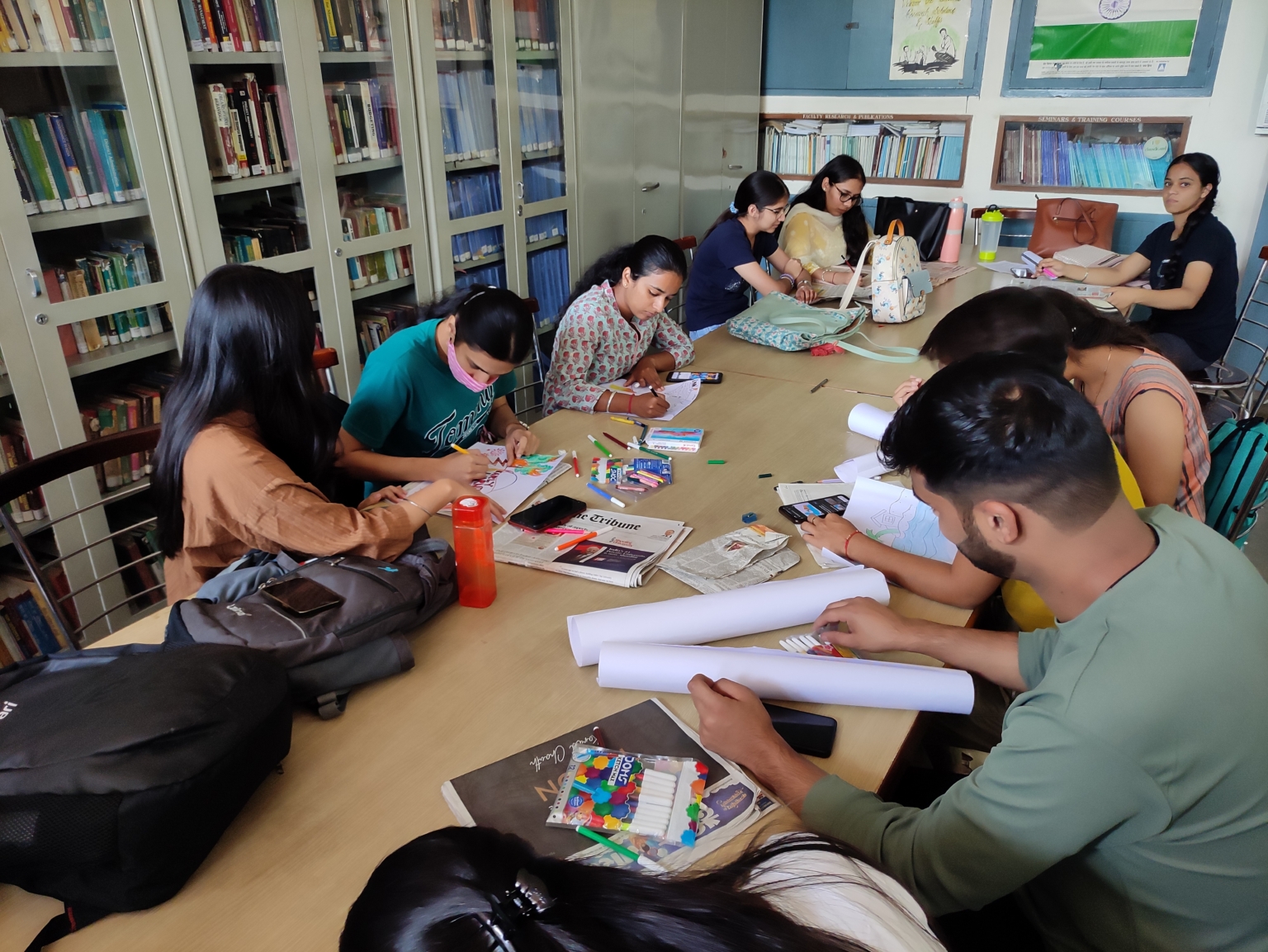Koral ‘Purnoor’, Demokratic Front, Chandigarh – 14 October
The Department of Public Administration, Panjab University, Chandigarh celebrated the International Day for Disaster Risk Reduction on 13.10.2022 by organising an Poster Making Competition in the Department. The day is an opportunity to acknowledge the progress being made toward preventing and reducing disaster risk and losses in lives, livelihoods, economies and basic infrastructure in line with the international agreement for reducing global disaster risk and losses.
In 2022, the International Day is focusing on Target G of the Sendai Framework: “Substantially increase the availability of and access to multi-hazard early warning systems and disaster risk information and assessments to people by 2030.” The primary goal of the Sendai Framework is to avoid creating new and reduce existing risk. But when that is not possible, people-centered early warning systems and preparedness can enable early action to minimize the harm to people, assets and livelihoods.
Students of the Department actively participated in the Poster Making Competition. The event began with a sensitisation of the students on the purpose of celebration of the Day. Dr. Bharati Garg, Chairperson of the Department impressed upon the need for adoption of a people-focussed and action-oriented approach to disaster risk reduction. Such an approach with early warnings can save lives and should cover multiple hazards. Disaster Risk Reduction applies to the risk of small-scale and large-scale disasters caused by man-made, or natural hazards, as well as related environmental, technological and biological hazards and risks.
#EarlyWarningForAll #IDRRDay
Early warning saves lives.
Early warning by 24 hours can cut the ensuing damage by 30 per cent.
Climate change is causing more frequent, extreme, and unpredictable climate-related hazards, making investment in early warning more urgent than ever.
Early warning systems must cover multiple hazards. Cyclones, storms, floods and tsunamis, but also to warn against heatwaves, wildfires, droughts, sandstorms, volcanic eruptions, earthquakes, disease outbreaks, technological accidents, pest infestations and many other hazards.




